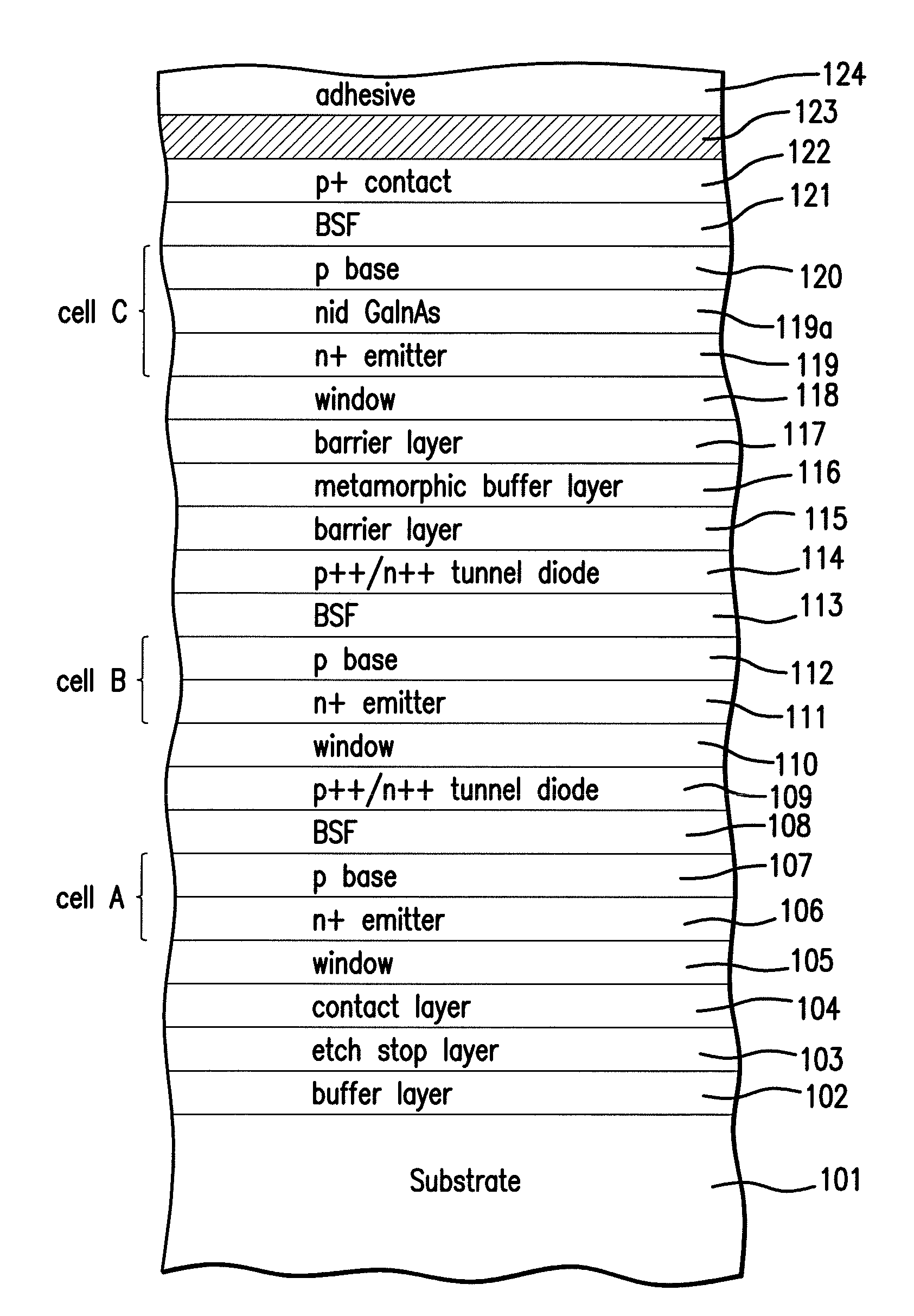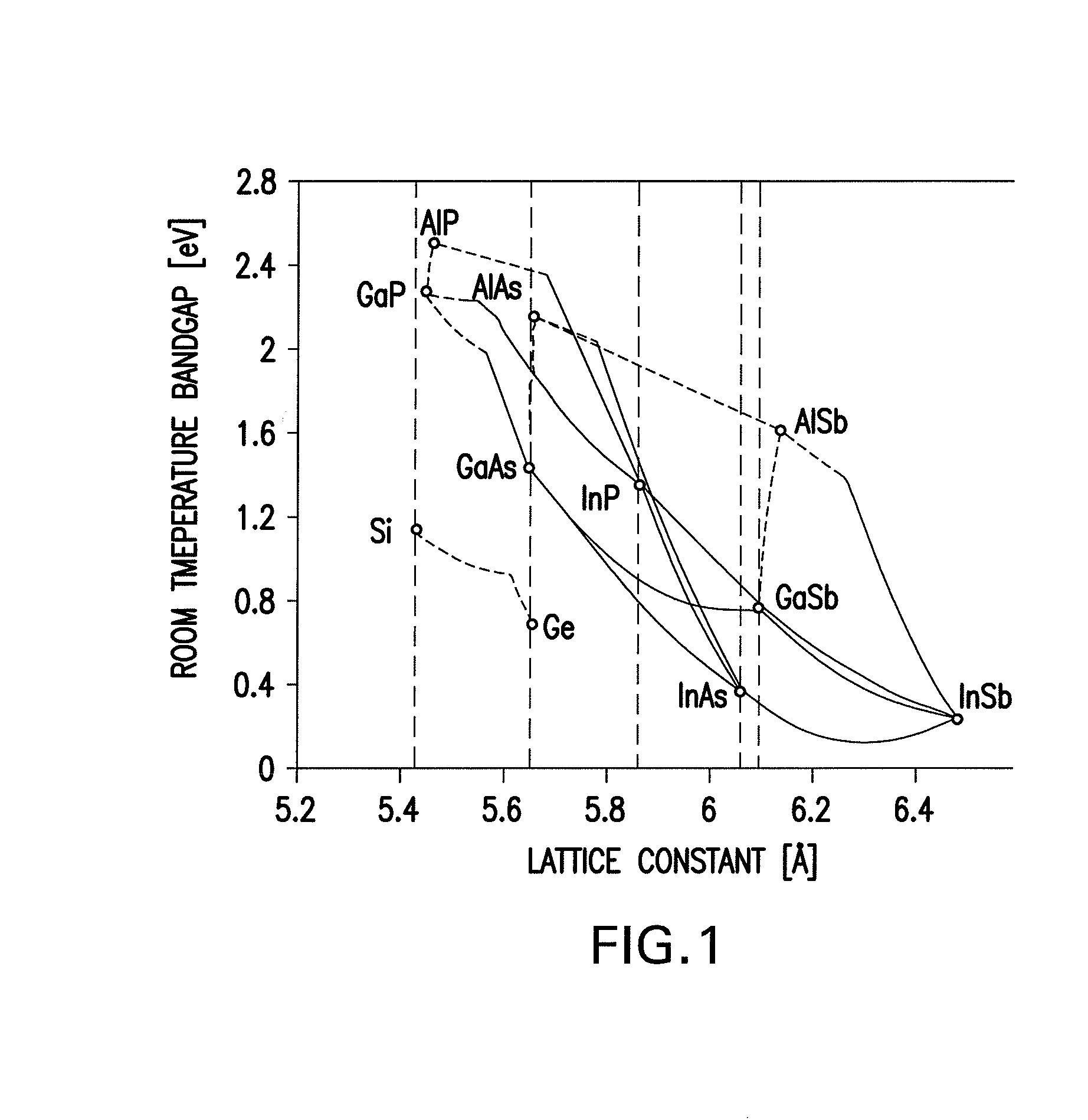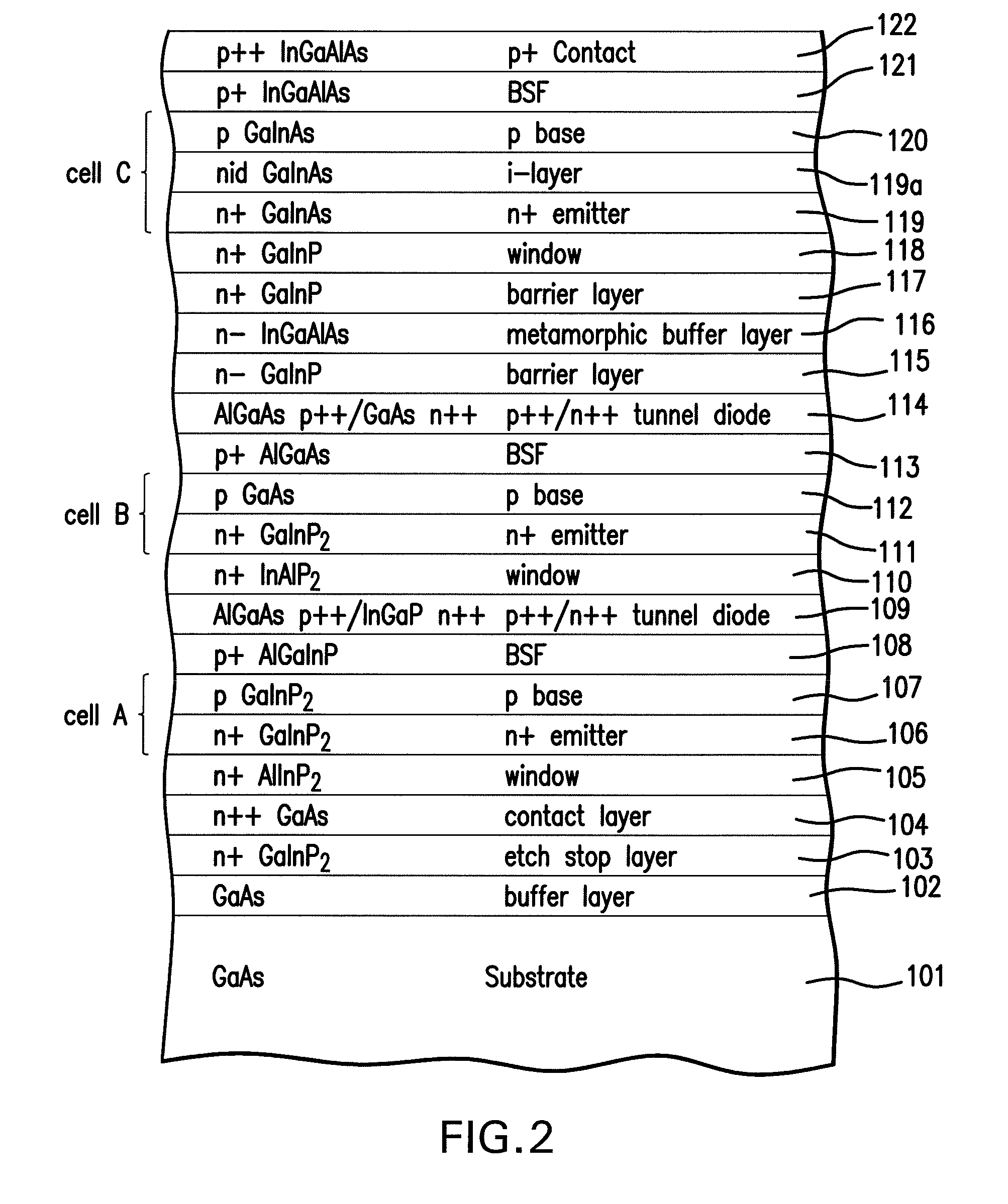Strain Balanced Multiple Quantum Well Subcell In Inverted Metamorphic Multijunction Solar Cell
a solar cell and multi-junction technology, applied in the field of semiconductor devices, can solve the problems of presenting a number of practical difficulties, and the demand for solar cells to meet the needs of more sophisticated applications has not kept pace with demand
- Summary
- Abstract
- Description
- Claims
- Application Information
AI Technical Summary
Benefits of technology
Problems solved by technology
Method used
Image
Examples
second embodiment
[0081]Although the preferred embodiment of the present invention utilizes a plurality of layers of InGaAlAs for the metamorphic layer 116 for reasons of manufacturability and radiation transparency, other embodiments of the present invention may utilize different material systems to achieve a change in lattice constant from subcell B to subcell C. Thus, the system of Wanlass using compositionally graded InGaP is the present invention. Other embodiments of the present invention may utilize continuously graded, as opposed to step graded, materials. More generally, the graded interlayer may be composed of any of the As, P, N, Sb based III-V compound semiconductors subject to the constraints of having the in-plane lattice parameter greater or equal to that of the second solar cell and less than or equal to that of the third solar cell, and having a bandgap energy greater than that of the second solar cell.
[0082]In another embodiment of the present invention, an optional second barrier l...
first embodiment
[0108]FIG. 14A is a cross-sectional view of the solar cell of FIG. 12 after the next process step in the present invention in which the surrogate substrate 125 is appropriately thinned to a relatively thin layer 125a, by grinding, lapping, or etching.
[0109]FIG. 14B is a cross-sectional view of the solar cell of FIG. 14A after the next process step in a second embodiment of the present invention in which a cover glass 513 is secured to the top of the cell by an adhesive. The cover glass 513 preferably covers the entire channel 510, but does not extend to channel 511.
[0110]FIG. 15 is a cross-sectional view of the solar cell of FIG. 14B after the next process step of the present invention in which the adhesive layer 124, the surrogate substrate 125 and the peripheral portion 512 of the wafer is entirely removed, leaving only the solar cell with the cover glass 513 on the top, and the metal contact layer 123 on the bottom, which forms the backside contact of the solar cell. The surrogat...
PUM
 Login to View More
Login to View More Abstract
Description
Claims
Application Information
 Login to View More
Login to View More - R&D
- Intellectual Property
- Life Sciences
- Materials
- Tech Scout
- Unparalleled Data Quality
- Higher Quality Content
- 60% Fewer Hallucinations
Browse by: Latest US Patents, China's latest patents, Technical Efficacy Thesaurus, Application Domain, Technology Topic, Popular Technical Reports.
© 2025 PatSnap. All rights reserved.Legal|Privacy policy|Modern Slavery Act Transparency Statement|Sitemap|About US| Contact US: help@patsnap.com



